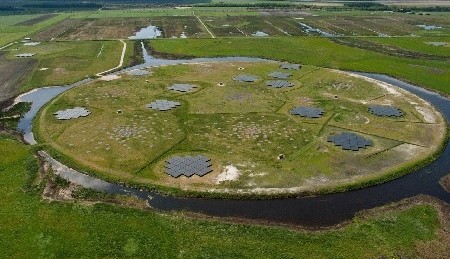LOFAR images growth of lightning
on

The Dutch radio telescope LOFAR, which from the north of the Netherlands fans out across a part of Europe, can follow the origin and development of lightning. Details that are a little smaller than one metre are visible, a resolution never achieved before. The results of this research, to which the RUG-physisists Brian Hare and Olaf Scholten have contributed, have been published in the Journal of Geophysical Research: Atmospheres.
Researchers are still scratching their heads about the origin of lightning. Lightning research is actually very difficult: you don't know beforehand where a lightning storm will occur, and if you happen to be in the middle of one, you would much prefer not to attract the lightning bolt.
Radio antenna
An accurate detection of lightning flashes is possible with the aid of radio antennas. If you have ever listened to a transistor radio during a thunder storm, then you will know that lightning generates radio signals. In various parts of the world there are already antenna fields especially for research into lightning. The LOFAR radio telescope is comprised of comparable antenna fields, spread across the Netherlands over some 3200 kilometres squared. These have now been utilised to study lightning with a resolution that has never been achieved before.
Small pulses
The researchers analysed LOFAR data that was collected during a thunder storm on 12 July 2016, early in the evening. A colleague waited for the storm and pushed a button each time there was a lightning flash. This caused the most recent twenty seconds of data to be frozen in the measuring stations in the ‘Transient Buffer Boards’, which were added to the LOFAR antennas on the recommendation (and with financing) of the Radboud University. These enable the enormous data stream of LOFAR to be temporarily captured so that it becomes possible to look back in time.
With that looking back in time, first the data from one antenna was analysed to determine the exact moment the lighting first began – that one second and a few seconds before and after were subsequently downloaded from 24 different LOFAR stations.
Short circuit
A lightning flash begins with a series of pulses which ionise the air in steps of around 50 metres in a 'channel' of about 1 metre diameter. Once such an ionisation channel forms a complete circuit – either with the ground or another cloud – the familiar lighting flash passes through it. The LOFAR data enables all small steps in the development of the discharge to be mapped accurately.



Discussion (0 comments)